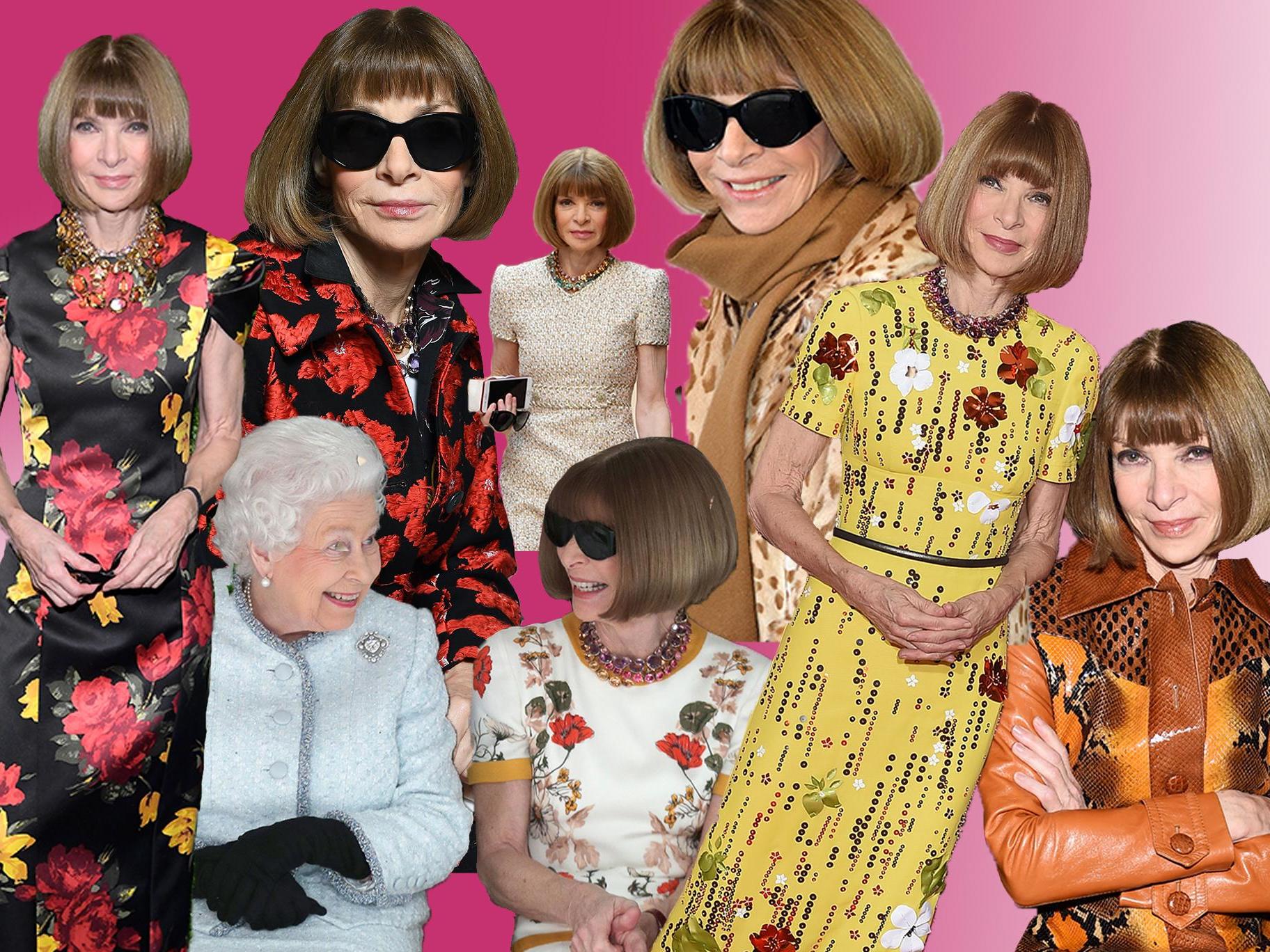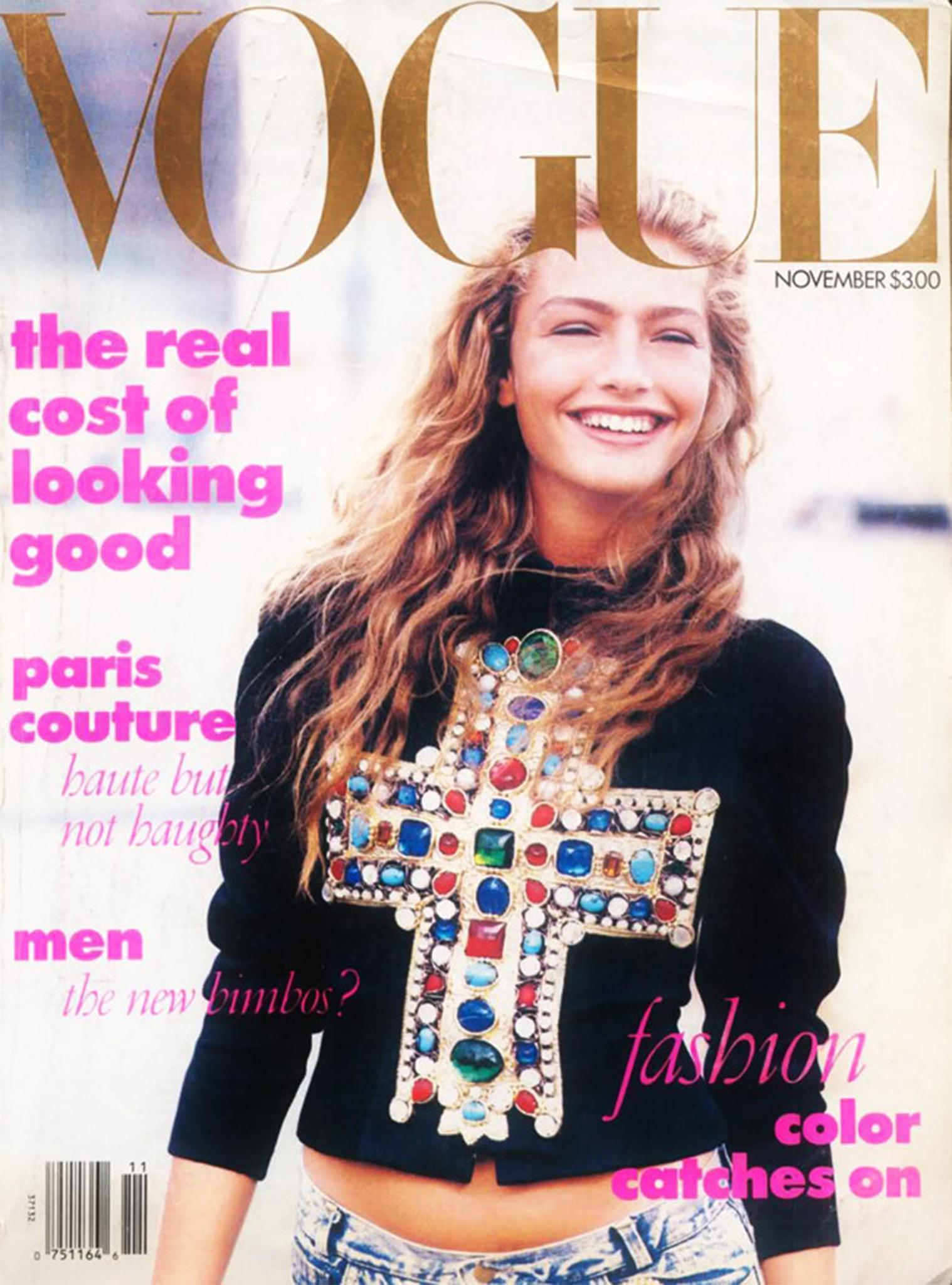Anna Wintour at 70: Why the Vogue editor plays such a vital role in the fashion industry
‘She’s basically the CEO of the fashion world’

When it comes to fashion industry titans, there are few who elicit respect and notoriety to the degree of Anna Wintour. The American Vogue editor is so well-known that she has been fictionalised, parodied and propelled into icon status.
In honour of Wintour’s 70th birthday, we look back at some of the editor’s greatest achievements and examine how she became the fashion industry’s most influential and illustrious figure.
Born in London in 1949, Anna Wintour came from a media family. She is the eldest daughter of the late Charles Wintour, who was editor of the Evening Standard in the 1960s and largely considered one of the most renowned British journalists at the time. Wintour’s younger brother, Patrick, is also a journalist and currently works as diplomatic editor at the Guardian. She has three other siblings, Nora, James and the late Gerald, who died in a car crash as a child.
Wintour attended North London Collegiate School in Stanmore, but dropped out aged 16. She soon took a job at cult 1960s London fashion boutique Biba, before completing a training programme at Harrods and landing a permanent role as editorial assistant at Harper’s & Queen magazine, now Harper’s Bazaar. In 1975, Wintour moved across the pond to become junior fashion editor at Harper’s Bazaar in the US, where she stayed for several years, going on to work at other now defunct titles including Viva and Savvy until the early 1980s.
Following a brief stint as fashion editor at New York Magazine, Wintour was headhunted for the role of creative director at American Vogue. In 1985, Wintour came back the UK and was appointed editor-in-chief at British Vogue. But her brusque nature and inability to suffer fools resulted in her landing the nickname “Nuclear Wintour” in reference to the prolonged climactic cooling experienced as a result of nuclear war. Wintour returned to New York after two years at the UK publication, and after a short period at House & Garden, was appointed editor at American Vogue, succeeding Grace Mirabella.
Wintour has been credited for revolutionising the fashion industry ever since her first issue at Vogue. The casual ensemble of Guess jeans and a bejewelled Christian Lacroix jumper worn by the cover star, the Israeli model Michaela Bercu, was striking in the industry at a time when glamorous evening gowns were the norm on newsstands. In fact, the image was so out of place that the printers returned the files, assuming there had been some sort of an error in the office and the cover had been a mistake. But Wintour was clearly onto something, going on to restore Vogue’s subscriber count, boost advertising and produce some of the largest magazine issues in history. The September 2012 edition, for example, ran to a staggering 914 pages. She has also been praised for pioneering the move to bring figures from outside of the fashion world onto the magazine’s pages, with celebrities, politicians and athletes all appearing on Vogue covers under Wintour’s 31-year-long reign.

In a recent discussion with New York Magazine about how social media influencers are changing the fashion industry, Wintour described Vogue as “the biggest influencer of them all”. Though many in the industry would say the same about her. When Wintour supports someone or something, people listen, which is why Vogue has become such a cultural touchstone for people in the industry under her leadership. “Wintour has become a cultural force,” says Saisangeeth Daswani, head of fashion advisory at trends intelligence service Stylus. “Her longstanding position at Vogue has seen her play a really integral role on the talent front, with her often handpicking the next ‘it’ designer. Wintour is an unwavering force of strength, constantly helping to put new names on the map and redefining what an icon is.”
Wintour has become a cultural force
Trend forecasters agree, with Francesca Muston, director of fashion at WGSN explaining that Wintour's creativity is unparalleled. “More often than not it’s a whole creative team who bring a new trend to life and Wintour is a masterclass on how to bring the right people together to create visuals which challenge and inspire us.”
As a trustee of the New York Metropolitan Museum, Wintour also spearheads the annual Met Gala, which sees celebrities from across the globe gather to celebrate the opening of the museum’s annual costume exhibition, dressing according to its theme. In 2014, the museum’s costume department was renamed as the Anna Wintour Costume Institute in honour of her work. She was also appointed artistic director at Vogue publisher Condé Nast in 2013 and was made a dame in 2017 for her services to fashion and journalism.

Wintour has become just as renowned for her work as for her signature look. Comprising a trademark brown bob, which she started wearing as a teenager, designer midi dresses, Manolo Blahnik slingback heels and dark sunglasses, her look rivals that of the late Karl Lagerfeld in terms of its idiosyncrasies. Wintour also famously sports her oversized shades indoors, telling CNN they are “incredibly useful because you avoid people knowing what you’re thinking about” and help conceal when she’s looking tired.
Despite her famously public steely persona, Anna has always been hugely encouraging to young people in the industry
Wintour’s career has not been short of controversy. In 2003, one of her former assistants, Lauren Weisberger, wrote a fictionalised account of her own time at Vogue, The Devil Wears Prada, which became an acclaimed film starring Meryl Streep as Miranda Priestly, who was modelled on Wintour. Despite the fact that the character parodied stereotypes based on Wintour – with Miranda forcing designers to redo their entire collections, putting impossible demands on her staff and chastising their budget wardrobes – the editor took it all in her stride, even wearing Prada to the film’s premiere in 2006. To this day, Wintour pokes fun at Weisberger’s portrayal in videos for Vogue, like when she participated in its beloved Q&A series, 73 Questions, and recreated some of the film’s most famous scenes.
While many have found it difficult to see past the Miranda Priestly archetype, those within the industry believe Wintour to be a force of nature, one who would not attract the same level of criticism were she a man. “Despite her famously public steely persona, Anna has always been hugely encouraging to young people in the industry, particularly designers,” says celebrity stylist Alex Longmore. “She is interested in people’s careers well beneath her own.” WGSN’s Muston agrees, adding: “Much is made of the negativity surrounding her uncompromising work ethic, but she is actually incredibly nurturing of young creatives, ensuring they have the platform to succeed.”
Industry insiders have long speculated when Wintour’s reign at Vogue will come to an end, but rumours amped up a notch last year in the wake of Vanity Fair editor Graydon Carter’s departure and the death of Conde Nast chairman Si Newhouse. Speculations reached such heights that the publisher’s then CEO, Bob Sauerberg, released a statement explaining that Wintour is “integral” to the company and will continue to work there “indefinitely”. Nonetheless, one presumes she will step down eventually. And when she does, the mark she left on the industry will continue to drive its direction for years to come.
Join our commenting forum
Join thought-provoking conversations, follow other Independent readers and see their replies
Comments